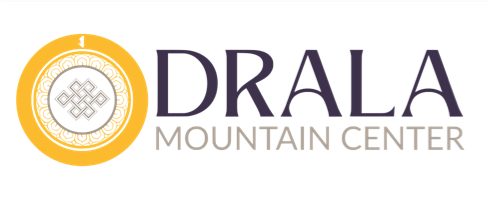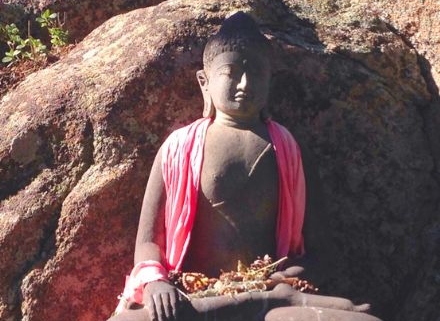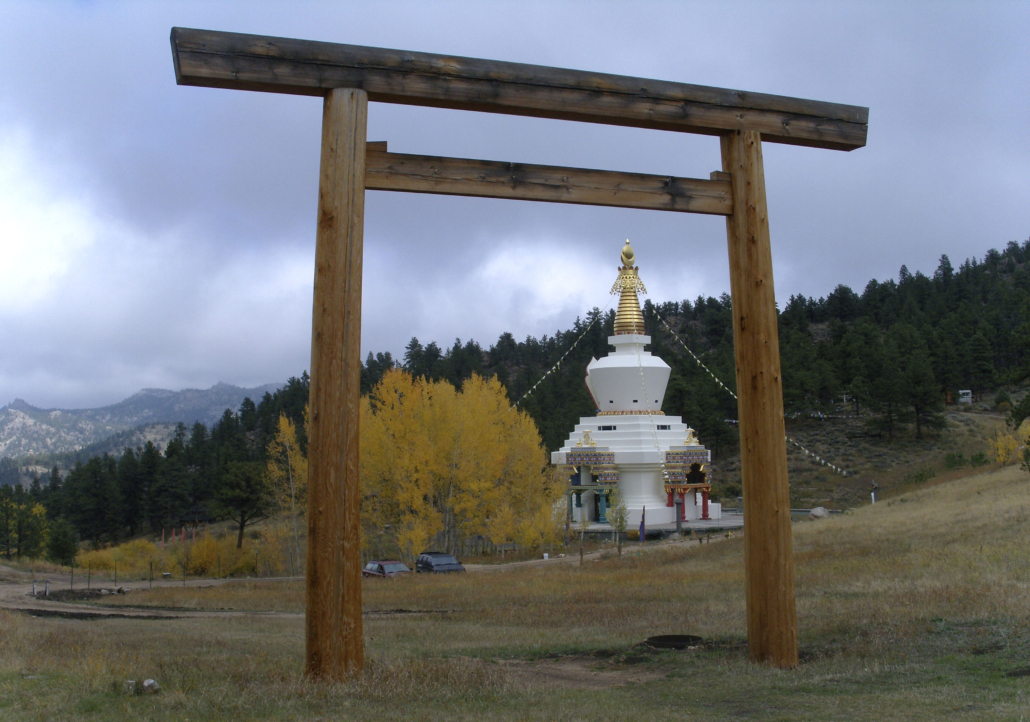Entering into Solo Retreat at Drala Mountain Center
By Robbie Rettmer, Executive Director
There is a special kind of silence at Drala Mountain Center. It arises from a breeze moving through the aspen, the deer watching with curiosity, and Marpa Point holding in quiet strength. When you come here for a personal retreat, you are entering sacred land where you can unfold and breathe.
Unlike structured group programs, a personal retreat offers you the freedom to create your own rhythm of practice. You can meditate at dawn in the Great Stupa, walk the forest trails, gaze into the beautiful Colorado sky, and allow your mind to settle at its own pace.
Many people come to Drala Mountain Center with a longing for stillness. Whether for a few days or more, a solo retreat allows for hearing yourself once again. For myself, I’ve come to value retreat as a return to my practice and what matters most.
Preparing for Retreat
You don’t need to be advanced to engage in a personal retreat. You don’t need to have everything figured out before you arrive. You don’t have to get it “right.” As Pema Chödrön says: “The path is the goal.”
Preparation can ease the transition to the altitude of 7,500 feet. Guest services will give you a list of what you’ll need. For sure, you will want to bring solid shoes and layers for the changing mountain weather. If you have a meditation cushion that is just right for you, consider bringing it along. A journal and art supplies can also be useful when inspiration dawns.
As you travel to the land, begin slowing down. Move into low gear as you drive on the dirt road to our main entrance. When you arrive, walk slowly. Greet the mountains. Our staff is here to ensure that your retreat meets your expectations.
Once You’re Here
At Drala Mountain Center, you have the freedom to create your retreat in a way that supports your intention. Here are a few personal recommendations along with how others have been in retreat at DMC:
- Be in Silence
Many retreatants choose to remain in silence during their stay, even while sharing meals in our community dining room or passing fellow guests on the trails. Letting go of unnecessary speech can bring contrast to habitual patterns, such as being authentic rather than hiding what’s real. What you’re truly feeling comes to the surface. Tell your loved ones you’re going to turn your phone off at certain times. Avoid media. Let your direct experience move your day.
- Practice at the Great Stupa
A short walk from our main campus is the Great Stupa. Built to instill peace and spiritual awakening, it is a sacred structure open for meditation and contemplation at any time of day. Many find that simply sitting in proximity brings stillness to the heart and clarity to the mind.
- Walk the Land
The 600 acres of wilderness surrounding Drala Mountain Center offers trails, aspen groves, pine forests, meadows, and mountain views. Allow for the natural world to reveal itself as you walk at a relaxed pace. Structure your retreat around walks at certain times of day—morning, midday, or twilight.
- Create a Practice Schedule
Some retreatants arrive with a specific practice or sadhana. Others create a rhythm once they arrive: meditation, mindful meals, walking, resting, writing, and contemplation. Your time can be shaped to support your intention. There are indoor meditation spaces available when not in use for group programs, and outdoor groves that naturally invite your practice. The staff will let you know what’s available while you’re here.
Meditation Instruction
While there are many meditation techniques you can explore through books or podcasts, the most important thing is to find what resonates with you. At Drala Mountain Center, we honor a diversity of practices. If you’d like Buddhist meditation instruction while you’re here, we have qualified teachers who can guide you. Just let us know when you register for your personal retreat.
Here’s an example of Buddhist meditation instructions, if needed:
- Find a stable posture. Sit upright with a straight spine on a cushion or chair.
- Feel your body. Let your attention rest on physical sensations and sounds.
- Notice your breath. Let it be natural. Return to it when distracted.
- Let thoughts come and go. No need to fight them or follow them. Just notice.
- Be kind to yourself. Don’t expect perfection—just presence.
- Open into spaciousness. Occasionally drop any effort and rest in awareness itself.
Close your session. Let your practice carry into the day.
The Courage to Be Alone
Retreat is not always easy. With no distractions, you may face boredom, restlessness or uncomfortable feelings. This is where real practice begins by staying with yourself, gently and kindly. All of it can be included in your practice.
There are moments in my retreats when I want to run away from my mind, not that we can! Staying can bring direct experience into the mind’s true nature. It can feel like seeing the sky after many days without the sun—timeless and vividly present. Dzogchen Ponlop Rinpoche teaches that “Mind’s nature is clear, knowing, and open like the sky. Thoughts and emotions come and go, but the sky remains untouched.”
Returning with Awareness
One of the gifts of personal retreat is that it doesn’t end when you leave. You carry the stillness into your relationships, your work, your daily life. You may find yourself speaking more kindly, listening more deeply, or pausing before reacting. This is the real result of practice that benefits yourself and others.
Lineage Wisdom
Dilgo Khyentse Rinpoche taught, “When we practice meditation, we are not trying to escape from ourselves but to get in touch with our true selves, with our wisdom heart.” Since the time of the Buddha, these teachings are living transmissions, passed from teacher to student, heart to heart. On retreat, you become part of that stream. Even in solitude, you are not alone.


